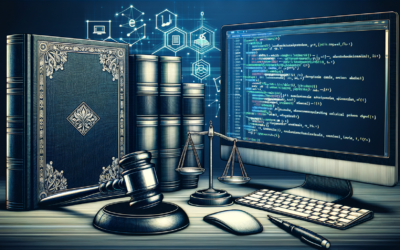Modeling Contractual Clauses
Modeling contractual clauses represents a challenge and a significant advance in the way contracts are conceived, analyzed and executed in different business sectors. Technological developments, in particular the emergence ofartificial intelligence and blockchain, are transforming contracts from simple documents into dynamic, interactive elements within legal and commercial affairs.
What is Contract Clause Modeling?
Contractual clause modeling involves creating a standardized representation of the terms and conditions of a contract. This may involve usinglegaltech to automate and structure contracts, simplifying the analysis and management of legal risks. In addition, modeling relies on data-driven predictions, as illustrated by legal analytics, to improve strategic decision-making in contractual matters.
Benefits of Contract Clause Modeling
Standardization
The adoption of a standardized structure makes for better understanding and saves valuable time for all stakeholders. This promotes efficiency in the negotiation and compliance phases, supported by processes such as automated contract management and legal project management.
Time-saving automation
Modeling also facilitates the automation of contract revisions and the creation of dynamic models, for example with contract lifecycle management systems, thus reducing drafting times and potential human errors.
Predictive Analysis Tools
The use ofpredictive analysis tools integrated into contractual clause modeling solutions offers the advantage of being able to predict the outcome of potential disputes and adjust clauses according to the risks identified.
Technology for Contract Modeling
AI and Natural Language Processing
Artificial intelligence, supported by automatic natural language processing, plays a considerable role in modeling contractual clauses, enabling the analysis of large quantities of contractual data and the extraction of precise information.
Blockchain and Smart Contracts
Blockchain offers a framework of security and transparency for contractual modeling. Combined with the concept of smart contracts, blockchain technology guarantees the conditional fulfillment of contractual obligations in a decentralized, automatic way.
Big Data Analysis
Big data applied to the law makes it possible to harvest and analyze voluminous data from contracts, offering unique insights for better strategic decision-making in contract drafting and modeling.
Frequently asked questions
Here is a list of frequently asked questions about Contract Clause Modeling.
How important is modeling for contractual clauses?
Modeling provides a coherent, structured representation of contracts, essential for efficiency and accuracy at every stage of the contractual lifecycle.
What are the essential tools for modeling contracts?
Automated authoring tools, contract management platforms and artificial intelligence systems for data analysis and risk prediction are essential for effective modeling.
Can clause modeling reduce legal risks?
Yes, it can identify areas of risk and propose clause wording that minimizes disputes and clarifies the parties’ expectations.
Please note that this article focuses on the importance and application of contractual clause modeling in the modern legal context. It offers an insight into how emerging technologies can transform standard contracting practices to make them more efficient, secure and responsive to the demands of a rapidly changing world.




